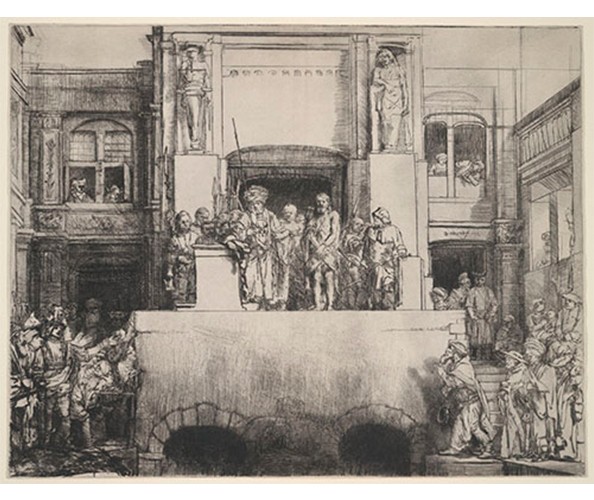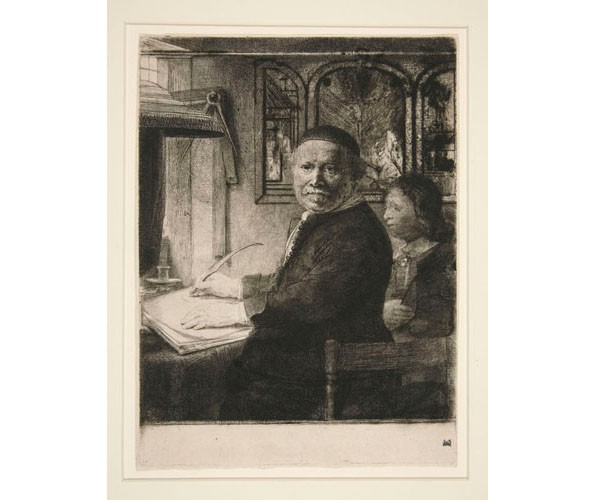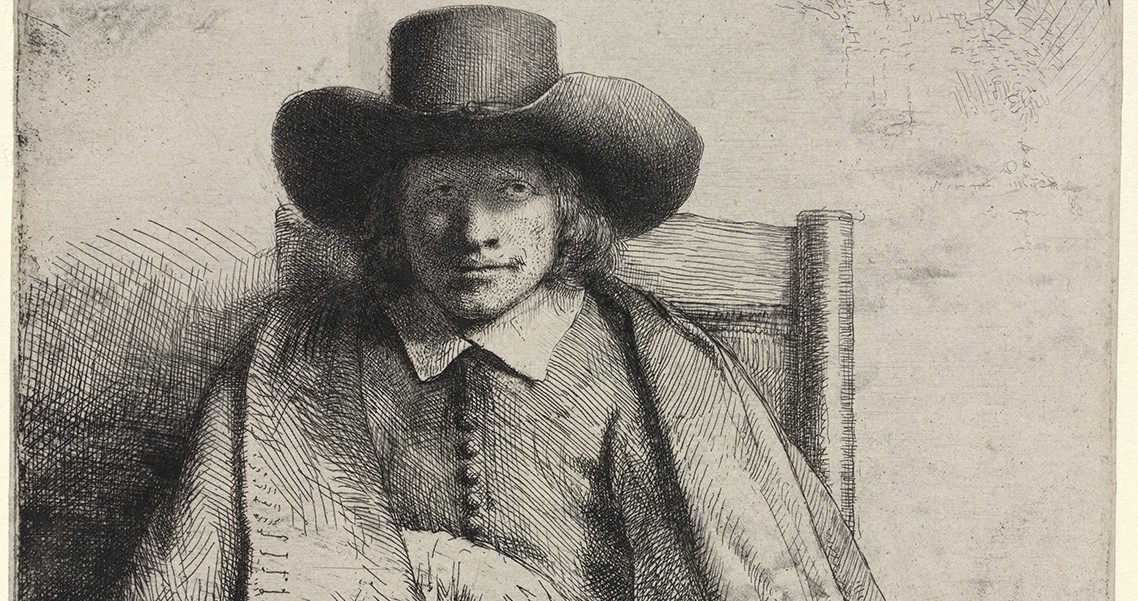Rembrandt's Changing Impressions
Rembrandt van Rijn (1606–1669) manipulated his copperplates in unprecedented ways to achieve printed images that were often in flux. That many of the different results were circulated as finished works in their own right marked a new moment in the appreciation of printmaking and the collecting of prints in the seventeenth century.
Rembrandt was the first artist to treat the print medium as a means of crafting visibly changing images. He was also the first printmaker to fully explore the use of newly available Asian papers for their aesthetic and technical effects. Many of these variations were the outcome of Rembrandt’s intense and restless search for results that satisfied his artistic sense. Others – especially among the portraits – were probably produced at the instigation of some of his print connoisseur patrons, a prospect that this exhibition explores further.
SELECTED WORKS
Image Carousel with 2 slides
A carousel is a rotating set of images. Use the previous and next buttons to change the displayed slide
-
Slide 1: Christ Presented to the People: Oblong Plate, 1655. State VIII of VIII. Drypoint. Sheet: 35.6 x 45.2cm, Plate: 35.7 x 45.3cm. Yale University Art Gallery, Fritz Achelis Memorial Collection, Gift of Frederic George
-
Slide 2: Rembrandt Harmensz van Rijn. Lieven Willemsz van Coppenol, Writing-Master: The Smaller Plate, ca. 1653 (Hind) or ca. 1658 (Boon and White). Etching; 10 1/8 x 7 1/2 in. Yale University Art Gallery, Fritz Achelis Memorial Collection, Gift of Frederic George

Christ Presented to the People: Oblong Plate, 1655. State VIII of VIII. Drypoint. Sheet: 35.6 x 45.2cm, Plate: 35.7 x 45.3cm. Yale University Art Gallery, Fritz Achelis Memorial Collection, Gift of Frederic George

Rembrandt Harmensz van Rijn. Lieven Willemsz van Coppenol, Writing-Master: The Smaller Plate, ca. 1653 (Hind) or ca. 1658 (Boon and White). Etching; 10 1/8 x 7 1/2 in. Yale University Art Gallery, Fritz Achelis Memorial Collection, Gift of Frederic George
Rembrandt’s Changing Impressions highlights 18 of the artist’s most notably intriguing or dramatically altered prints. It gathers together 52 impressions from 14 different U.S. collections to best show the images in their circulated iterations. All of the works exhibited here were produced during Rembrandt’s lifetime, and almost all were likely printed by the artist himself or under his direct supervision.
This is the first time in over 40 years that such an exhibition has been undertaken, and the new scholarship contributes much to a reinvigorated discussion. A publication reproducing all the works will make these images broadly available, and a symposium timed to the IFPDA Print Fair will foster a scholarly conversation.
This project has been generously supported by the Netherland-America Foundation, the Dutch Culture USA program by the Consulate General of the Netherlands in New York, the International Fine Print Dealers Association / IFPDA Foundation and the European Institute at Columbia University.

